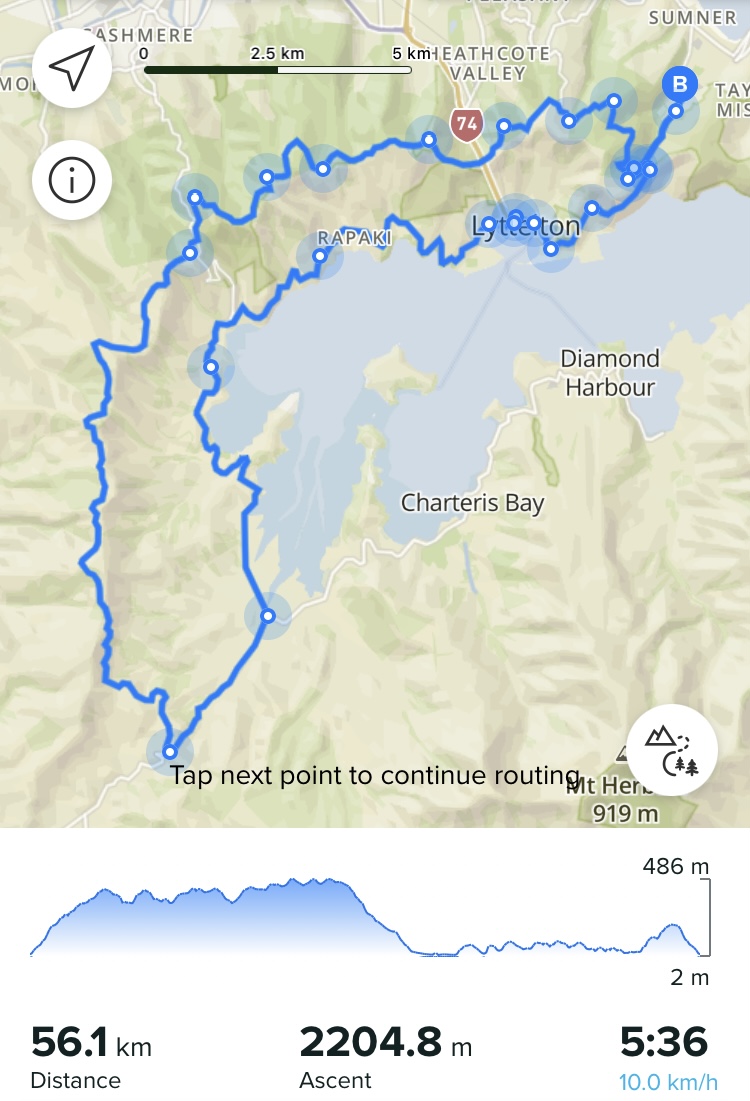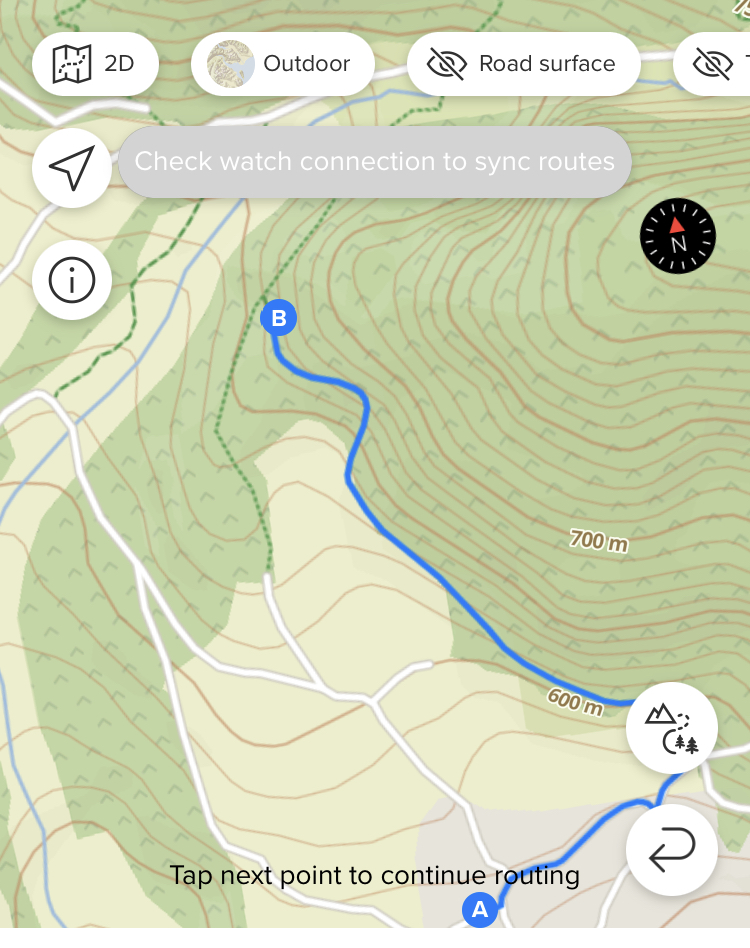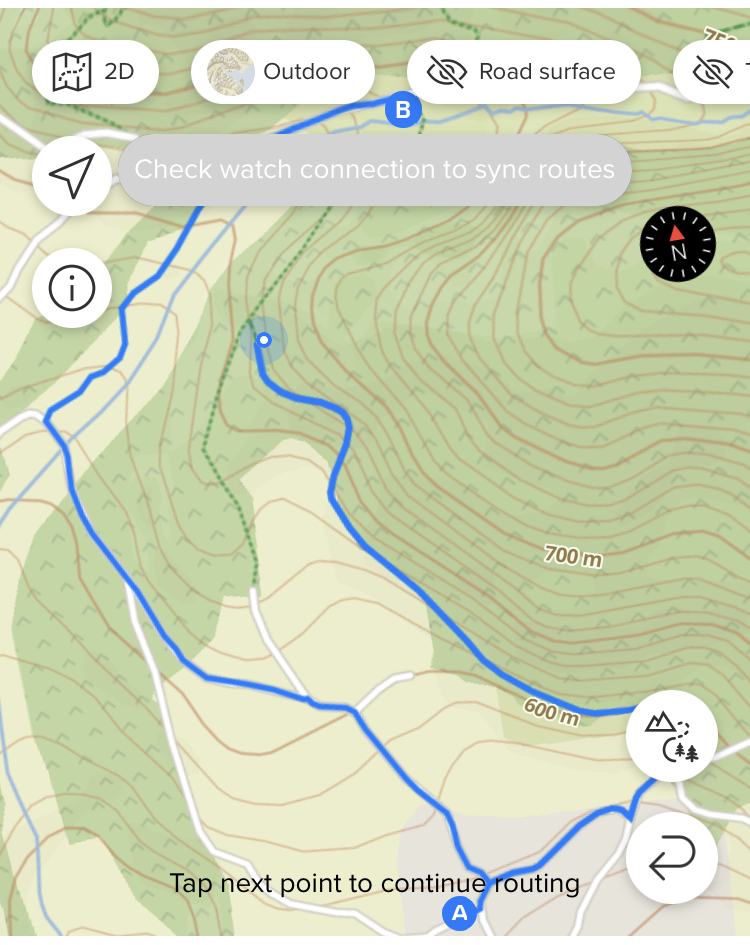SA: route planner
-
@DMytro and another issue is, that sometimes elevation is not measured anymore when free drawing a route. Would be such a great tool, but sadly you have to switch to Komoot or Footpath on the phone or plotaroute.com on the desktop. It syncs to Suunto too btw.
-
@gi0vanni I do not agree with @DMytro here
 You cannot route people over possibly dangerous terrain, dangerous terrain is to be left to people that do not need an app to plan routes for them.
You cannot route people over possibly dangerous terrain, dangerous terrain is to be left to people that do not need an app to plan routes for them. -
@isazi wdym haha. First, you have to define dangerous: for inexperienced people T3 is already dangerous enough (especially since this scale is somewhat subjective and some T3s can be more difficult than some T4s). If people have fear of heights or don’t have proper shoes, then even T2 may be too much. Yet one still allows this sections to be routable.
If suunto wants so much to keep the training wheels mode - that’s fine, but make it optional. You can even make a non-skipable disclaimer every time one routes over such sections ‘may include scrambling/via ferrata/glacier/etc - sure footedness and proper gear is a requirement’.
If I ( I don’t want to call myself experienced, but I did more than a few of T4s, ferratas, etc) want to follow a T4 route in more or less pathless terrain that has a marker here and there, I for sure want to have a route on my watch to have an idea of a general direction. And where else I’m suppose to plot these things? ‘Knowing what one does’ doesn’t assume an intrinsic knowledge of all T4+ paths in the world. At least in my opinion.
Btw, I rarely let an app plan the route for me, but instead of free drawing with tons of points I have to set manually, I usually get away with 10-20 points that I select manually and let the app figure out how to connect them, while I still know every fork that the app is supposed to route me through. -
@isazi then it should be marked with T1-T5 or something like that to represent the difficulty. But stop routing without notification (and I have that on quite easy trails here in my region that it does not route automatically) is the worst option IMHO
-
@trailcafe @DMytro completely agree, I did not know that this is the reason I can not plan routes on certain paths…
-
@Likarnik it is not the only reason, there are trails that are marked as private property, trails that are marked only for some activities, etc.
-
@gi0vanni said in SA: route planner:
missing info in the map or what? (btw, that piece of forbidden path does not present any difficulty, nor it’s private)
As I already said, find it in the openstreemap editor and check. Openstreetmap is a community effort, so there are errors that users can fix.
Edit: I can also check that for you if you share the position of that trail
-
@isazi it’s marked highway=path so should not be a problem (used by pedestrians, small vehicles like bicycles, and/or animals. This includes walking and hiking trails, bike paths, horse and stock trails, mountain bike trails, as well as multi-use paths for cyclists and pedestrians or similar combinations)
-
@gi0vanni Where is this path? Tell us, so we can check it.
I changed some feutures in OSM because it was wrong mapped and not routable in SA.
-
@gi0vanni
highway=pathmay not be enough, depending on other metadata of the track -
@Mitch9 said in SA: route planner:
Where is this path?
-
-
I guess the problem is very probably the river crossing


-
@Mitch9 said in SA: route planner:
@gi0vanni I think the problem is this:
sac_scale: unknown
So the SA planner always avoids paths where key sac_scale is unknown?
-
different, but related to SA planner. It makes me crazy planning route for road biking, where it:
- does not follow straight road and use non logical shortcuts
- prioritize cycling paths (even sidewalks) over the road
so in order to use tbt I have to manually adding planning points to avoid using of shortcuts, what is really pita.
-
@dombo said in SA: route planner:
It makes me crazy planning route for road biking, where it:
- does not follow straight road and use non logical shortcuts
- prioritize cycling paths (even sidewalks) over the road
so in order to use tbt I have to manually adding planning points to avoid using of shortcuts, what is really pita.
Yeah, I agree that it’s a PITA although I think I have just gotten used to it now. Often I’ll have to plot 3 or 4 smaller points/segments along what is essentially a straight road because the SA map sends me off all over the place it I try to go from a simple A to B point. Sometimes I can get around this a little bit by changing the road surface, for example setting it to paved roads for road cycling but a lot of the time it’s like it wants to pick the craziest routing to get to where I want to get to; I’ll often have to change this a few times if I am mapping out a larger route. Instead of having a small number of points plotted I end up having to drop in lots just so I can map the actual route I would like to travel. Here’s one as an example, case in point


-
There are some unroutable segments out there and this has nothing to do with difficulty or danger. Some places in OpenStreet Map just can’t get routed through. There is a bike/pedestrian bridge over a highway where i live (and ride) and you just can’t do a route through it. I tried to check the OpenStreet map and edit it, but that segment has the correct attributes. Btw. it does not work for creating routes in SA, but also in Strava.
-
plotaroute.com is also based on OSM maps and routes anything without issues. Same for the Footpath app. Can someone explain, why there are differences in routing? For me it seems, that SA fails and the others can manage route creation in a better way. But I cannot explain it to me why this is the case.

-
@trailcafe Indeed! yesterday i took some time to plan well known routes with SA and twice i ran into the same problem. komoot however worked without any problems. it is a pity for SA, just hope they will address this issue in the future
-
@trailcafe
OSM is the source of data : points, path, tracks, etc… are created there, with attributes.
Then, there are map generations using these source of data, and each map generator (OSM itself for itself, or mapbox for others, or openandromap, etc…) are taking attributes and filter, tweak, to display the way they want/can.
Then it comes to routing, where same OSM data source is used by routing engines to follow what can be followed using routing profiles (sometimes one can see routed path on a “path” not displayed on the map itself )
)Something in OSM not routable “at all”, and no routing engine will go through this.
But something routable, according to some profile criteria can be walked through but not cycle, etc…, and finally (maybe not complete explanation, just my own understanding) which optimisation or path choosing when multiple are possible, it is the magic inside each routing profiles/engines i think.Then SA/Komoot/etc use all OSM raw data, have potentially their own mapping “provider”/“sources”, and also their “own” routing engine/profiles.
It may just explain the differences, not why SA is not the best at routing (according to users).

